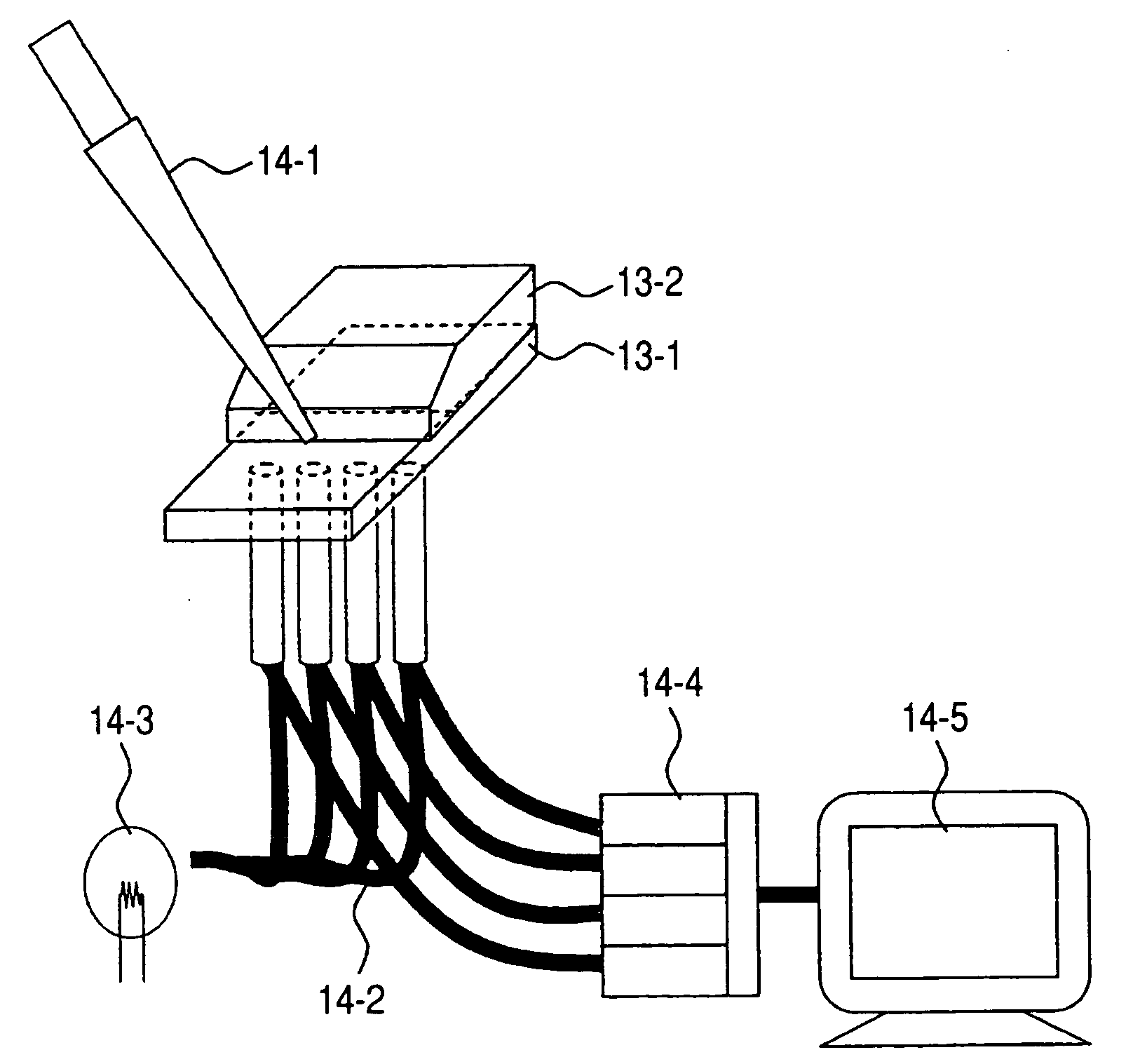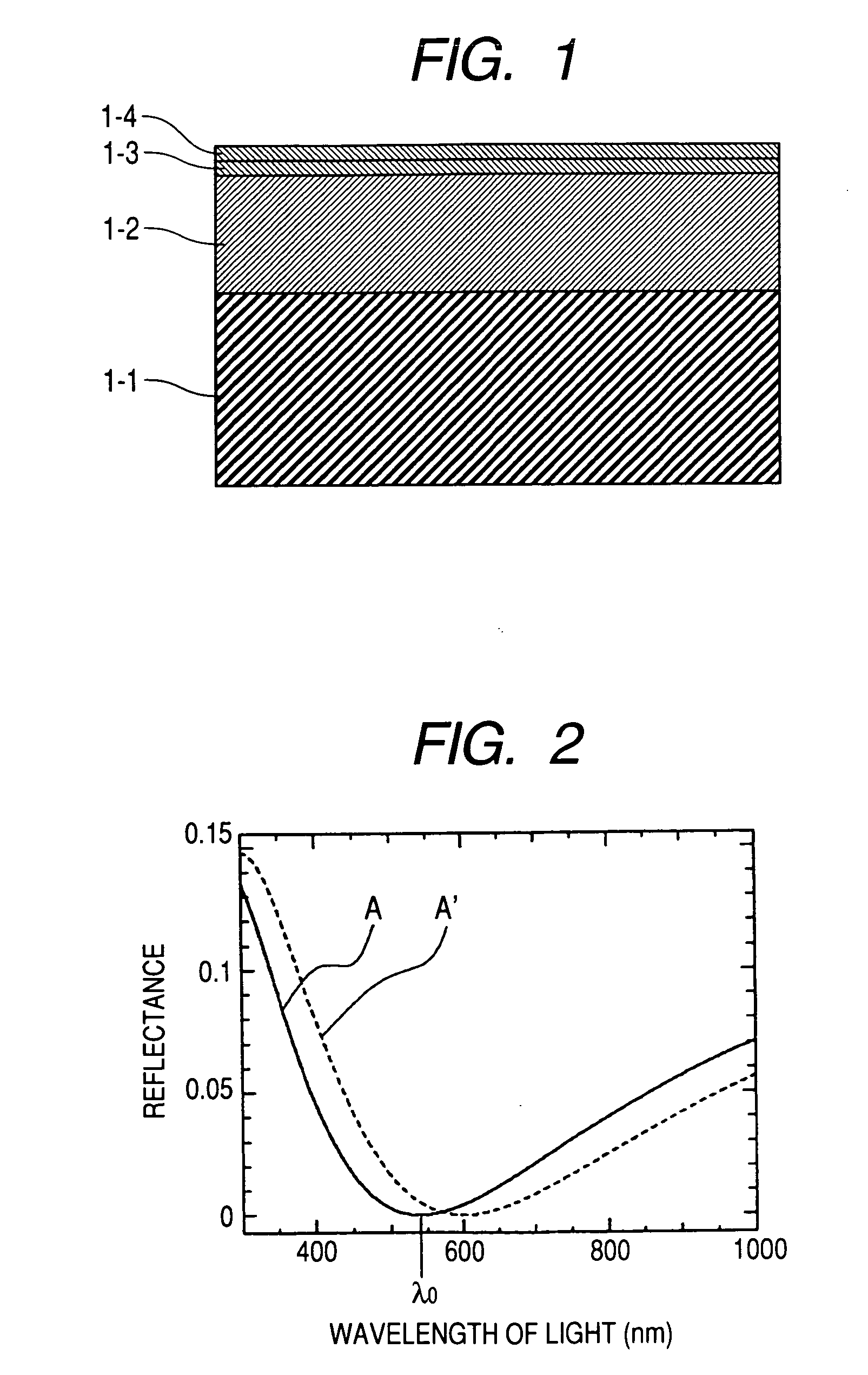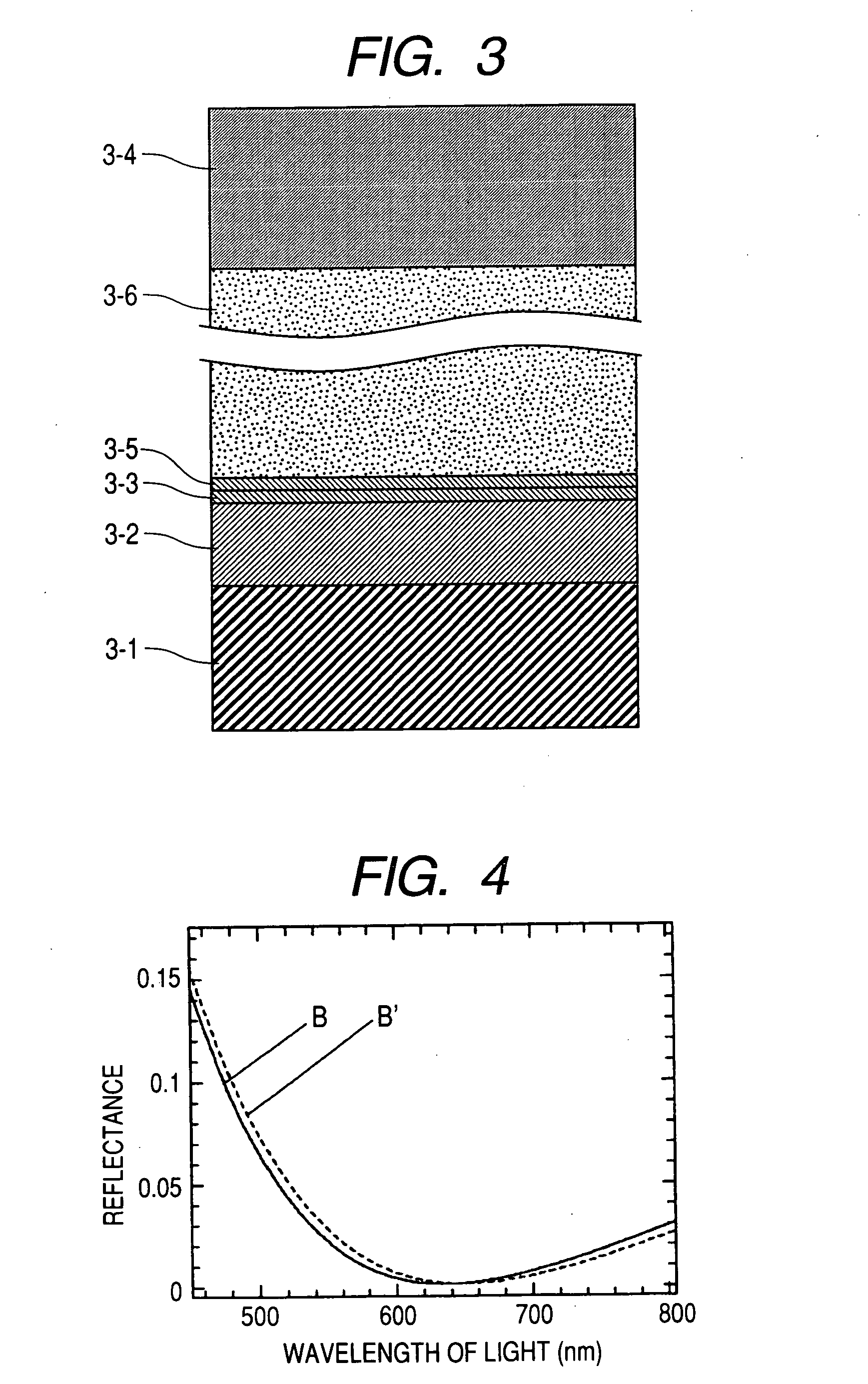Cells for biochemical analysis, kit for biochemical analysis, and biochemical analyzer
a biochemical analysis and kit technology, applied in the field of cells for biochemical analysis, can solve the problems the inability to ignore the optical interference effect between the surfaces facing each other, and the problem of adsorption of biochemical substances on the optical window, etc., to achieve high sensitivity
- Summary
- Abstract
- Description
- Claims
- Application Information
AI Technical Summary
Benefits of technology
Problems solved by technology
Method used
Image
Examples
first embodiment
[0045]Hereafter, an embodiment of a simple cell for biochemical analysis and a simple biochemical analyzer of this invention that uses optical interference will be described.
[0046]First, a production method of a kit for biochemical analysis will be explained. FIG. 13 shows a production method of the kit for biochemical analysis. As shown in FIG. 13A, a first substrate 13-1 and a second substrate 13-2 having a flat plane are prepared. The first substrate 13-1 and the second substrate 13-2 can be made of a transparent glass. A vertical elevation 13-3 of approximately 240-nm height is formed in the first substrate 13-1, and a flat plane 13-5 is made higher by 240 nm than a flat plane 13-4 beforehand. The second substrate 13-2 is provided with a plane 13-6 nonparallel to the flat plane on the opposite side thereof beforehand. The flat plane 13-4 of the first substrate 13-1 and the flat surface of the second substrate are silane-coated using 3-aminopropyltrimethoxysilane. Since the surfa...
second embodiment
[0053]Although the substrate is specified to be made of a glass in the first embodiment, the kit for biochemical analysis can be produced with resins, such as polystyrene and PDMS. FIG. 18 shows a production method of a kit for biochemical analysis in the case where a resin is used for a substrate. As shown in FIG. 18A, a first substrate 18-1 and a second substrate 18-2 having a flat plane are prepared. In this embodiment, the substrate 18-1 and the substrate 18-2 are specified to be made of transparent polystyrene. As shown in FIG. 18A, the first substrate 18-1 is provided with a vertical elevation 18-3 of 240-nm height and a member 18-4 for keeping the separation between the first substrate 18-1 in which a wall of approximately 240-nm height and 80-nm width are arranged in a period of 400 nm and the other substrate. Note that, with the help of the vertical elevation 18-3, a flat plane 18-5 of the substrate 18-1 is made higher than the other flat plane 18-6 by 240 nm. Like the firs...
third embodiment
[0060]In the first embodiment and the second embodiment, the specimen solution is introduced into the cell using capillarity. The binding of the target with the probe can also be measured as follows: A space formed between the substrates is used as a flow cell and a state where the specimen solution flows in the cell regularly is made, for example, by applying a pressure to it. This embodiment explains an example of the case where a space formed between the substrates is used as the flow cell.
[0061]FIG. 22 is an explanatory diagram about a production method of a kit for biochemical analysis in the case where a gap for holding a specimen solution is specified to be the flow cell. As shown in FIG. 22A, a first substrate 22-1 and a second substrate 22-2 having a flat plane are prepared. The first substrate 22-1 and the second substrate 22-2 are specified to be made of PDMS. As shown in FIG. 22A, the first substrate 22-1 is provided beforehand with an area 22-3 having an array of slots ...
PUM
| Property | Measurement | Unit |
|---|---|---|
| refractive index | aaaaa | aaaaa |
| refractive index | aaaaa | aaaaa |
| refractive index | aaaaa | aaaaa |
Abstract
Description
Claims
Application Information
 Login to View More
Login to View More - R&D
- Intellectual Property
- Life Sciences
- Materials
- Tech Scout
- Unparalleled Data Quality
- Higher Quality Content
- 60% Fewer Hallucinations
Browse by: Latest US Patents, China's latest patents, Technical Efficacy Thesaurus, Application Domain, Technology Topic, Popular Technical Reports.
© 2025 PatSnap. All rights reserved.Legal|Privacy policy|Modern Slavery Act Transparency Statement|Sitemap|About US| Contact US: help@patsnap.com



